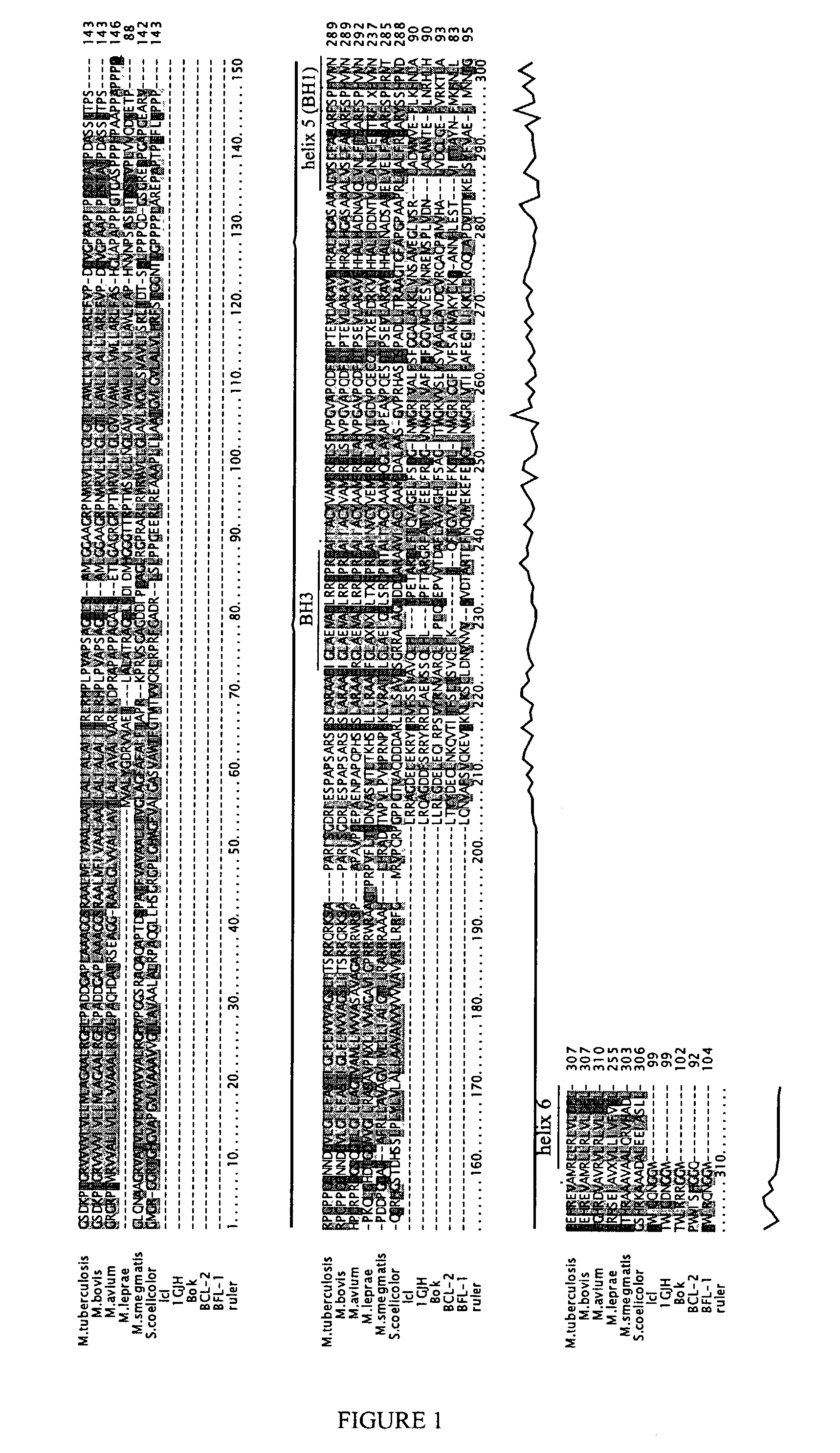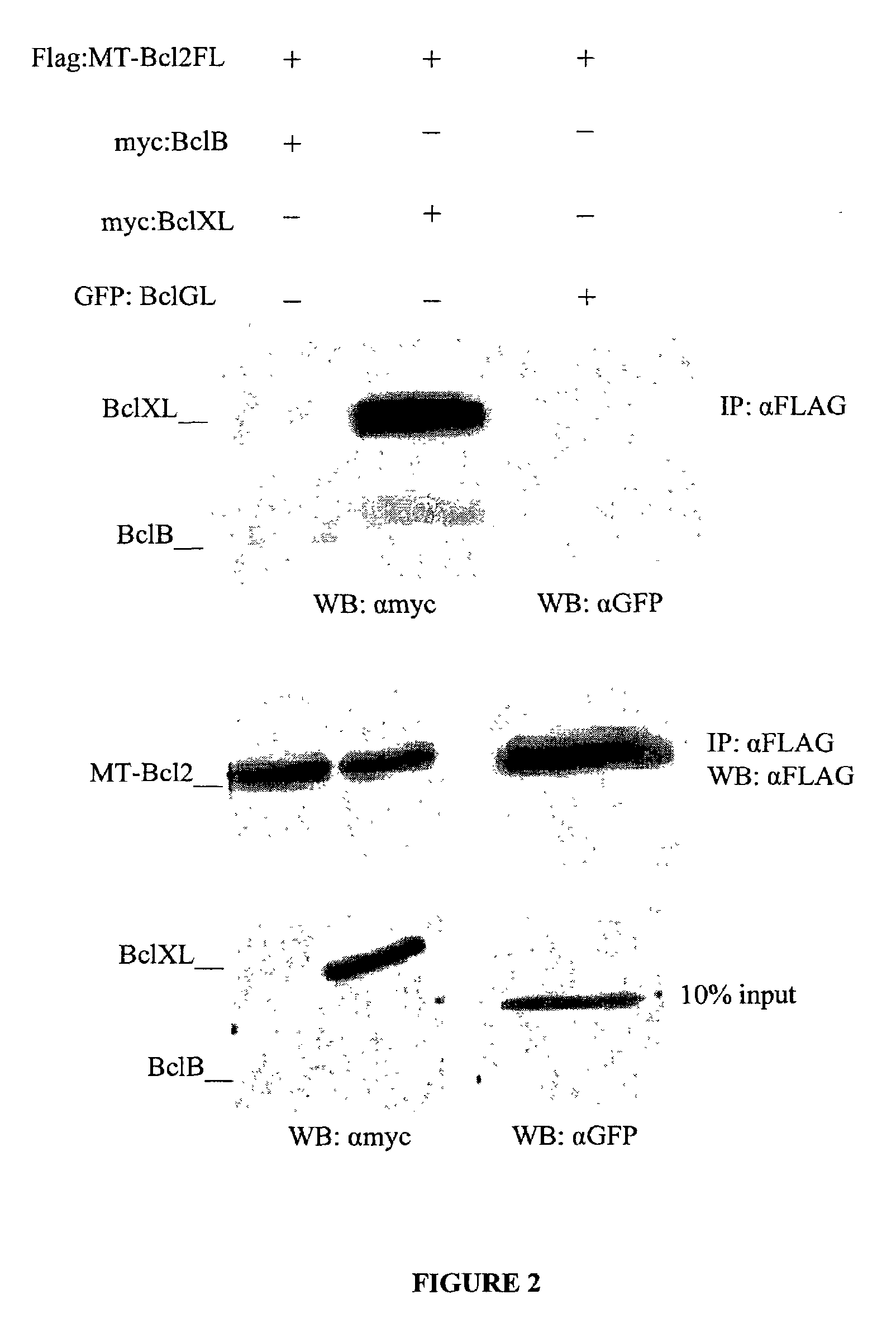Bacterial Bcl-2 domain-containing polypeptides, encoding nucleic acid molecules, and related methods
a technology of bcl-2 and polypeptide, which is applied in the field of cell biology and infectious diseases, can solve the problems of no bcl-2 family members identified to date in prokaryotes, compromising the integrity of the epithelial barrier, and affecting the survival rate of bacteria,
- Summary
- Abstract
- Description
- Claims
- Application Information
AI Technical Summary
Benefits of technology
Problems solved by technology
Method used
Image
Examples
example i
[0154]This example shows the identification of bacterial Bcl-2 domain-containing molecules.
[0155]Bcl-2 domain-containing bacterial polypeptides were identified using the algorithm and approach described in Li et al., Bioinformatics 16:1105-1110 (2000). Briefly, a representative set of Bcl-2 domains was used as queries and a cascade of TBLASTN and PSI-BLAST searches was performed on nucleotide databases at NCBI (htgs, gss, dbest) and the NR protein database. Candidate Bcl-2 domain-containing polypeptides were identified in M. tuberculosis and S. coelicolor.
[0156]The candidate Bcl-2 domain-containing polypeptides were confirmed by running a Fold & Function Assignment System (FFAS) fold prediction calculation (Rychlewski et al., Protein Sci. 9:232-241 (2000); hypertexttransferprotocol: / / bioinformatics.ljcrf.edu / FFAS_apoptosis) against a database of proteins of known structures (PDB) enriched in apoptotic domains.
[0157]The identified Bcl-2 domain-containing polypeptides were compared a...
example ii
[0159]This example shows the association between a bacterial Bcl-2 domain-containing polypeptide and mammalian Bcl-2 family members.
[0160]HEK293T cells were cultured in DMEM supplemented with 10% FBS. Cells were then transfected using Superfect Reagent (Qiagen) with expression plasmids encoding various combinations of epitope-tagged human Bcl-2 family members (myc-BclXL, myc-BclB or GFP-BclGL) and epitope-tagged Bcl-MT (FLAG-MTBcl2-FL), as shown in FIG. 2. Transfected cells were then cultured in the presence of 50 mM benxocarbonyl-Val-ALA-Asp-fluoromethylketone (zVAD-fmk) to prevent apoptosis, and resuspended in lysis buffer (50 mM Tris-HCl, pH 7.4, 150 mM NaCl, 20 mM EDTA, 1% Nonidet P-40, 1 mM DTT, 1 mM PMSF and a protease inhibitor cocktail (Roche)). 10% of the total lysate volume was reserved. The remainder of the lysates was precleared by incubation with protein G agarose beads (Santa Cruz) for 2 hrs at 4° C. and then incubated with 10 μl of monoclonal anti-FLAG Sepharose (Cova...
PUM
 Login to View More
Login to View More Abstract
Description
Claims
Application Information
 Login to View More
Login to View More - R&D
- Intellectual Property
- Life Sciences
- Materials
- Tech Scout
- Unparalleled Data Quality
- Higher Quality Content
- 60% Fewer Hallucinations
Browse by: Latest US Patents, China's latest patents, Technical Efficacy Thesaurus, Application Domain, Technology Topic, Popular Technical Reports.
© 2025 PatSnap. All rights reserved.Legal|Privacy policy|Modern Slavery Act Transparency Statement|Sitemap|About US| Contact US: help@patsnap.com


